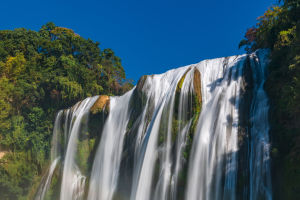Deserts are vast, barren areas characterized by sand, few plants, little rainfall, and dry air. They are typically aeolian landforms, with beaches, dunes, and rocks often appearing under the sand.
Some deserts are salt flats with no vegetation at all. While deserts are inhospitable for living things, there are valuable mineral deposits in the desert, and many oil deposits have been discovered in modern times.
Deserts are defined by how dry an area is, not its temperature. Geologists identify cold deserts where temperatures typically fall below 20°C and hot deserts where temperatures often exceed 35°C or even 58°C. Such areas cover about 25% of the Earth's land surface. Deserts have no permanent rivers due to a lack of water.
The Middle East is one of the driest regions globally, with vast deserts. The following is an introduction to several famous deserts in the Middle East:
Sahara Desert: Formed about 2.5 million years ago, the Sahara Desert is the largest sandy desert globally, covering an area of about 9.32 million square kilometres, located in northern Africa. The climate conditions in this area are very harsh, and it is one of the most inhospitable places on earth for living things.
Arabian Desert: The Arabian Desert is the largest desert in the Middle East, located on the Arabian Peninsula, covering an area of more than 2 million square kilometres. The climate here is hot and dry, with high temperatures all year round, making it one of the most inhospitable regions globally.
Kawadh Desert: Located in southeastern Iran, the Kawad Desert is the largest crater desert in the Middle East, covering an area of more than 51,000 square kilometres. The climate here is very harsh, with summer temperatures as high as 70°C or higher.
Kony Sea Desert: The Konyhai Desert is located in the southwest of Pakistan. It is one of the smallest deserts in the Middle East, covering an area of about 20,000 square kilometres. The climate here is very dry, and the temperature in summer is as high as 50°C.
Badland Desert: The Badran Desert is located in northwestern China, adjacent to the Middle East, covering an area of more than 49,000 square kilometres. This is one of the largest deserts in China and is famous for its unique "many gorge" landscape.
Iraqi Desert: The Iraqi desert is located in eastern Iraq and western Saudi Arabia, covering an area of about 36,000 square kilometres. The climate here is very dry, and the temperature in summer is as high as 50°C.
While these deserts have their characteristics, some are famous for their high temperatures and dryness, and some are famous for their different landscapes such as basin deserts and crater deserts. In terms of geography, climate, and culture, these deserts are unique natural resources in the Middle East, worth exploring and understanding.
It is worth noting that deserts are not only inhospitable but also fragile ecosystems that require preservation. Human activities, such as overgrazing, off-road driving, and oil drilling, have resulted in desertification, reducing the already scarce resources for desert wildlife and plants.
Therefore, it is essential to protect the deserts' natural beauty and resources while exploring and understanding them.


